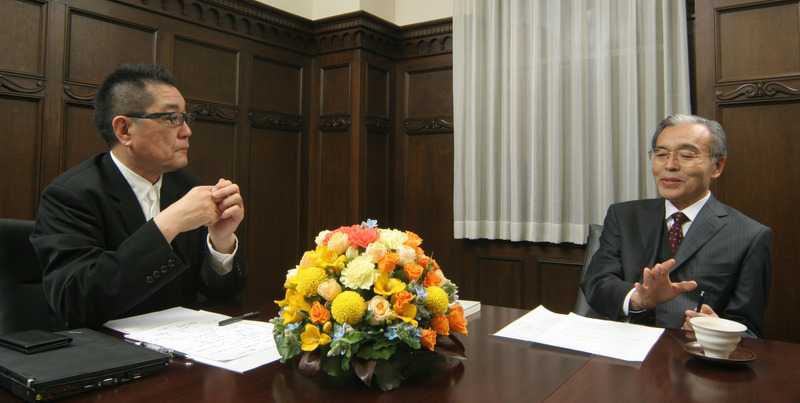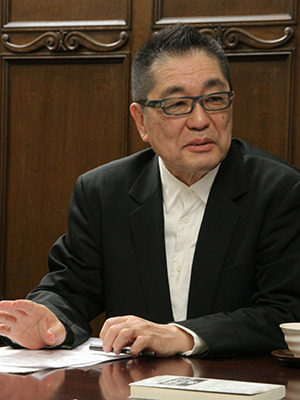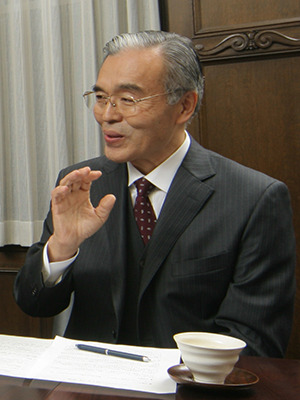
(Affiliation as of publication in "Ad Studies")
Following on from last time, we asked Mr. Akira Kajiyama, who has long been involved in research across academia and industry, and Mr. Hideki Katahira, who has led the marketing world from data analysis to branding, to point out major trends in the research world and the problems and challenges emerging within it. We also explored the very essence of what research is, while discussing the philosophy and positioning of research in future marketing activities.
What is the fundamental basis of research?
Katahira: I believe that within the scope of marketing research, or market research, there is a role to re-verify the validity of new mechanisms or benefits discovered, and to confirm the interesting hypotheses that emerge from them.
While statistical surveys and approaches to human behavior are entirely different, what matters most for researchers and practitioners is their sincerity—their genuine interest or even awe—toward the subjects they seek to engage.
Kajiya: You've just highlighted both theoretical issues and practical realities. It's true that some research lacks a human touch. Even in academic papers, the standard format often follows: prior research and hypotheses, then the survey and results, modeling explanations and analysis, conclusions, implications stating the research findings, and finally, any shortcomings noted in the limitations section. While a certain formal logic is maintained, it's often utterly uninteresting to read.
In other words, the focus is more on analytical techniques and verification processes than on the personalities or circumstances of the people who became the sample. Factor analysis is often used in surveys, but once you assume a certain factor structure and calculate the factors and factor loadings, the discussion rapidly unfolds as if those factors actually exist in the real world. Sometimes, you even get the feeling that the questions were crafted specifically to extract a particular factor. This means almost no attention is paid to the human beings who became the survey subjects.
Katahira: Absolutely.
Kajiya: The commonality and rotation axes in factor analysis are based on mathematical assumptions, and the number of factors is decided by the researcher. So, it's more of a hypothesis than an explanation of facts. When many factors are neatly named and used to explain facts cleanly, it actually makes me uneasy. Once factor analysis results come out, it would be good to re-examine them using some method of observation.
Katahira: Even worse is taking the average. While this is a fundamental analytical technique, it actually encompasses various realities. Focusing solely on the average leads to the mistaken belief that society is centered around such people.
Kajiya: At the core of statistics lies a kind of realist view of science, implicitly assuming the existence of a "true value" for the population and its representative mean or variance. The classic example representing this is the beautifully shaped normal distribution, like Mount Fuji. Common methods like regression analysis and factor analysis all assume normal distribution and linear relationships. This way of thinking becomes a kind of theoretical burden, perhaps leading us to want to view everything through averages.
Katahira: When you take many samples and the population is single, I do think there are environments where the normal distribution holds fairly well. The methodologies developed from this must be respected as one valid approach. Rather than debating whether statistics is good or bad, we must grasp the fundamentals as a basic principle. Researchers' attitudes in this regard have become a bit lax.
Kajiya: Indeed, there are various concerns at the fundamental level. In laboratory studies, samples must be randomly assigned to ensure the experimental and control groups are homogeneous beforehand. Surprisingly few studies properly follow this random assignment procedure. Since the attributes of subjects in each group are unclear, it becomes impossible to judge the quality of subsequent analyses. Furthermore, at a very basic level, some studies are conducted with clearly biased samples. Participants might be limited to students in a specific course, graduate students, or heavily skewed toward female university students. When investigating human emotions, studying only these groups makes generalization impossible.
Katahira: That indicates a lack of study in experimental design. It reveals an ambiguous fundamental question about what one actually wants to know. Saying the hypothesis isn't interesting is really just saying you don't want to know much (laughs).
For example, when the theme is smartphone usage, you need to consider the most efficient approach for gathering data. Sometimes, overly complex experimental designs are created, forcing respondents to answer numerous questions. I consider this a bad habit in research. The tendency to include "this and that" inevitably bloats the questionnaire. Yet, the fundamental principle of research is how simply you can get to the core.
In other words, you must be a pro at understanding people, not just a pro at surveys. If you don't fundamentally grasp what aspects of human nature can be understood most easily through questioning, things can go terribly wrong.
Kajiya: There's definitely a tendency to create overly complex mechanisms. Sometimes I see things so difficult that I'd be stumped if I were the respondent, yet the data still comes through reliably. Respondents are cooperative, you see.
Katahira: The tendency to use complex mechanisms stems from thinking we need this and that. But what questions we ask is also crucial. During interviews, for example, it's vital to ask questions that help us understand a person's essence by tying it to their behavior. Here too, our attitude toward observing people is being tested.
A simplistic approach to research
Kajiya: In your case, Mr. Katahira, you've tackled marketing science head-on. Has the emphasis shifted toward an interpretive approach rooted in a human-centered perspective?
Katahira: No, I'm often told I haven't changed much from 30 years ago (laughs). What I mean is, while marketing science primarily deals with quantities, there should be raw reality behind those numbers and figures.
For example, if you have a nice set of points in a regression analysis, I've always insisted that you must go out and see the reality behind at least three or five of those points. If one point represents one person, you should meet that person. Meeting three or four should give you a solid sense of the reality. The more you aggregate into numbers, the more you must engage with the people behind those numbers – the ones who generate them.
Kaji: So if theory and tangible reality aren't connected, you can't grasp the truth, right?
Katahira: For example, most people use Suica now. We can track movements and travel areas of people leaving Ikebukuro Station at 5 PM. But that's individual data. While aggregating it into overall trends creates some model, it's crucial to meet even just two or three of those people and ask them about their actual situation at that time. Arbitrarily assuming they were heading to Shinjuku for shopping is extremely dangerous.
I'm also concerned about respondent quality. What surprised me was hearing top-tier research firms claim they have 300,000 monitors. When you pose a question, they flood you with answers. But these might be people sitting at their computers answering every survey they can find. They're essentially in the business of providing answers, and filtering out such individuals is difficult.
Kaji: So it's a business that works because both sides understand?
Katahira: Essentially, it's about wanting results that match expectations, delivered quickly and cheaply (laughs).
Kajiya: When I was at the newspaper company, I conducted many surveys. Back then, survey professionals had a lot of pride, or rather, they were very strict about sampling. At the time, Professor Tomio Hayashi of quantitative theory was like the guru of this field, and mass surveys held significant power in society. While America was said to be stricter than Japan, I found it strange that many email surveys were far from the ideal of random sampling. Now, online surveys face similar issues. While fair sampling has become harder and the internet offers cheap, easy access, we can't overlook biases in sample design or response rates. Recently, some new generation researchers barely care about this. For instance, a service targeting elderly users might use a panel that excludes anyone over 60. I get that online surveys aren't the most user-friendly for seniors, but...
Katahira: Even if you screen by attributes, it's possible that the entire pool—say, 20,000 people—might all be professional respondents (laughs).
Kajiyama: The content of the questions can be surprising too. I won't go into specifics, but they keep asking incredibly sensitive questions that you'd never find in a typical online survey. It's amazing they actually get the data. Behavioral economics and psychology casually use the term "altruism." Do they think it's just a translation term? "Altruism" comes from "forgetting oneself to benefit others" (忘己利他) in Saichō's "Sange Gakushōshiki." It's the pinnacle of compassion, a special Buddhist term. So please don't call it altruism just because you were slightly kind to someone (laughs).
Katahira: In market research or social survey studies, we thoroughly cover the fundamentals before diving into actual analysis methods – things like how to set up samples or design questionnaires.
In the U.S., we also practice things like how certain phrasing introduces specific biases, or which of two options is preferable. That aspect seems to be missing here.
[Continued in Part 3 (Final) ]
*The full text is available on the Yoshida Hideo Memorial Foundation website.











